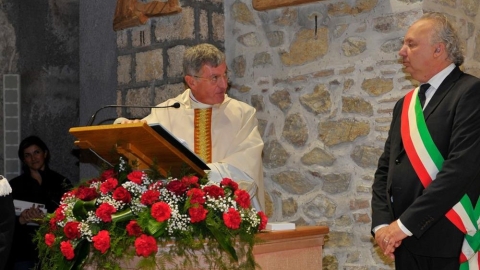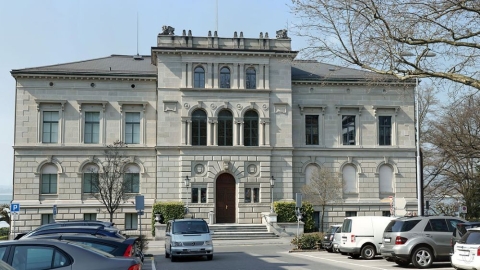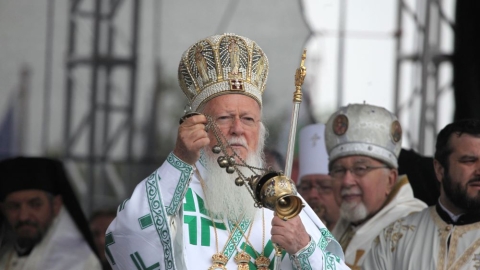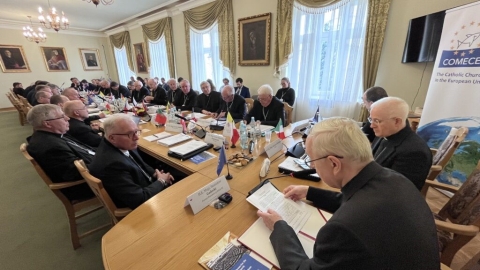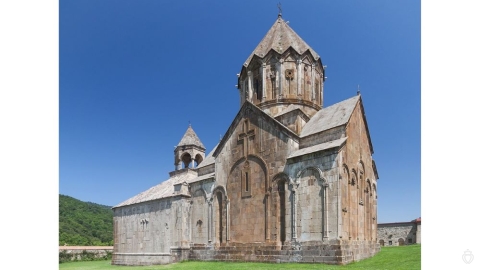Dicastery for the Doctrine of the Faith Publishes a Note on the Sacraments

The new document from the Dicastery for the Doctrine of the Faith (DDF) is dated February 2, 2024, and is titled Gestis verbisque, which can be translated as “through gestures and words.” It refers to the constitution of sacraments, which consist of acts associated with ritual formulas.
In his presentation letter, the Prefect of the DDF, Cardinal Víctor Manuel Fernández, explains the reason for this Note: in January 2022, the cardinal and bishop members of the Congregation for the Doctrine of the Faith “had expressed their concern regarding the multiplication of situations in which the invalidity of celebrated sacraments had been noted.”
Many difficulties came out of this: the need to track people down in order to repeat invalid baptism or confirmation, or even to baptize then ordain priests whose baptisms were invalid, leading to the nullity of the sacraments administered by them--except for baptism.
The Prefect also warns that “changing the form of a sacrament or its matter is always a gravely illicit act and deserves an exemplary punishment, precisely because such arbitrary gestures are capable of causing grave harm to the faithful People of God.”
A Classic Explanation
The document explains in its introduction that “the liturgical celebration, in particular that of the sacraments, does not always take place in full fidelity to the rites prescribed by the Church.” And the DDF, having been consulted “many times” on the validity of celebrated sacraments, had to “sometimes conclude with a painful negative response,” particularly in the case of baptism.
The first part, while referring to the notion of the Church as a sacrament emphasized at the Second Vatican Council, which could be seriously discussed, nevertheless refers--just this once--to the Council of Trent, which had “solemnly declared the divine institution” of the seven sacraments. This requires an exemplary fidelity to this institution.
The second part recalls that the Church is not mistress of the sacraments: she cannot touch their “substance,” still according to the Council of Trent--that is to say, to the words, to the gestures, and to the matter, which are necessary to carry out a sacrament.
The words constitute the form: they explain what is being achieved. The matter can be an element (water, oil, bread, wine), and the gesture often accompanies the formula, like a Sign of the Cross or an anointing. Added to that is the intention of the minister, who must have the intent to accomplish “what the Church does.” Modifying one of these elements often renders the sacrament invalid.
The third part finally recalls that it is always Christ who principally acts in the sacraments: it is He who infuses grace into souls. The minister only offers his assistance. Furthermore, the Church acts with Christ, as His Spouse, and the priest also acts in the name of the Church. And the minister cannot replace Christ, nor the Church.
This is why he must religiously respect the sacramental liturgy over which he has no other power than to administer it: he cannot touch nor change anything. The text, despite this precise theology, maintains a source of deviations that it wants to eradicate.
Forgetting Responsibilities
In no. 21, it in fact recalls that, according to the Second Vatican Council, “we must leave room for legitimate diversity and adaptation to diverse ethnic groups, regions, peoples, especially in the missions.” It adds: “the liturgical reform [...] not only authorized the episcopal Conferences to introduce general adaptations [...], but it also anticipated the possibility of particular adaptations by the minister of the celebration.”
This is the liturgical reform, a true revolution, which blew a wind of anarchy into the celebration of the sacraments. The fact--absolutely unprecedented--that in around ten years, the rites of all the sacraments would be more or less profoundly reformed cannot but give the impression of flexibility in these fundamental elements of our worship.
Thus, in the Mass, the changes introduced and then multiplied were legion: at the end of the 70s, more than ten “Eucharistic prayers” had been approved, from the four originals to the one authorized “for particular circumstances” including those for children’s Masses and the innumerable variants in various countries.
Thus, in a few years, the Latin rite, which had only ever had a single canon, having nourished the worship and meditation of the clergy and the faithful for so many centuries, was suddenly loaded with ten or so Eucharistic prayers, coming out--with the exception of the first--of the liturgical conception of the time. This was a conception which would soon become dated, by the admission of even the most enthusiastic.
It must be added that this Note of the DDF is not the first intervention of the Curia on this matter. The Congregation for Divine Worship and the Discipline of the Sacraments published the Instruction Inaestimabile donum on April 3, 1980. In it no. 5 reads: “We must use only the Eucharistic prayers contained in the Roman missal or legitimately allowed by the Apostolic See, according to the modalities and within the limits that it has fixed.”
This warning turned out to be clearly insufficient. Abuses continued to flourish. The following years would see the warnings parade by. Starting in 1988, Pope John Paul II felt obliged to recall that “we cannot tolerate that certain priests arrogate to themselves the right to compose Eucharistic prayers.”
Fifteen years later, the Congregation for Divine Worship and the Discipline of the Sacraments must again intervene. On March 25, 2004, it publishes the Instruction Redemptionis Sacramentum, on certain things to observe and to avoid concerning the Most Holy Eucharist.
The members of the Curia should perhaps meditate on these words: “God laughs at men who deplore the effects whose causes they cherish,” adapted from the great bishop, Jacques-Bénigne Bossuet (The History of the Variations of the Protestant Churches, Book IV).
(Source : Vatican – FSSPX.Actualités)
